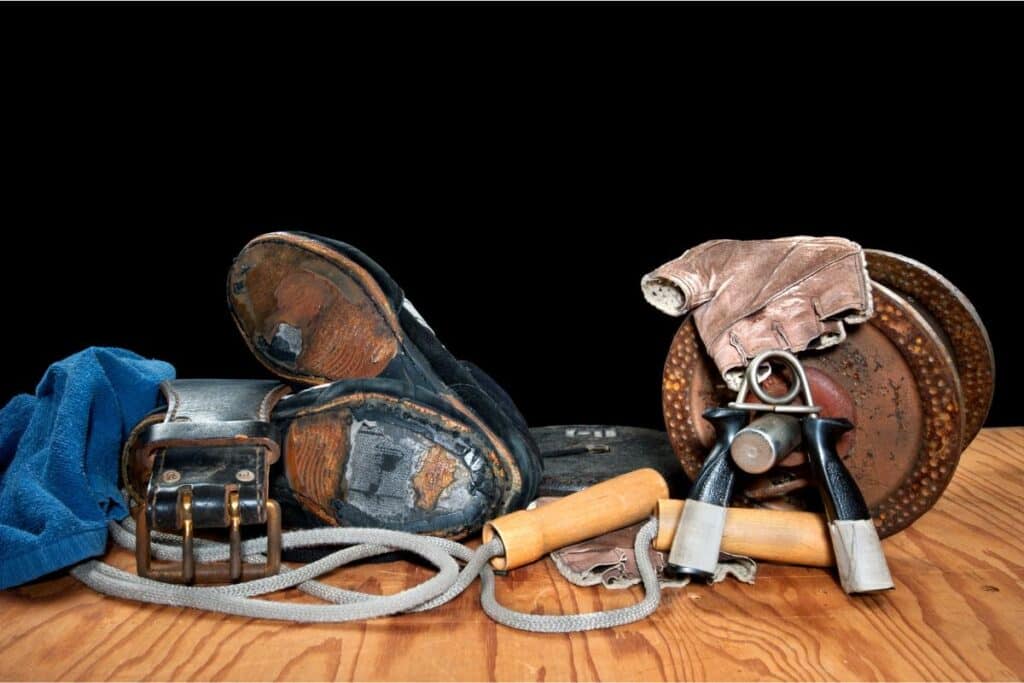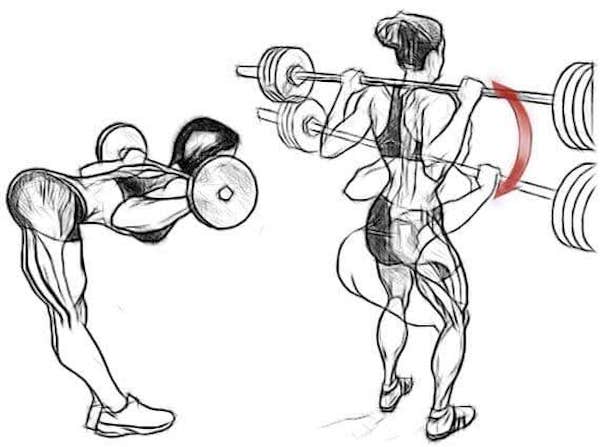How do you perform the good morning exercise safely? Several weight-bearing exercises can both build muscle and improve your balance. If you do them correctly, you’ll be engaging your core, improving your posture, and gaining a better awareness of your entire body. This is certainly the case with the good morning exercise. In this article we will discuss how to perform good mornings correctly and safely as well as the benefits of performing the exercise.

Muscles Worked By Good Mornings
Some theories suggest that the good-morning exercise closely mimics the movements that you make when waking up and getting out of bed each morning. Others suggest that the good-morning exercise is like the bow that a person might make as a “good morning” greeting. Irrespective of where or how we derived its name, it is a short, simple movement that engages the abdominal muscles, glutes, lower, and mid-back.
Engaging some of the largest and most powerful muscles, including the hamstrings, is a dominant form of training and doesn’t require a tremendous amount of skills. It’s also excellent for the back, given that it builds strength in the erector spinae or the muscles that extend and stabilize the spine. If you’ve ever heard that this movement is bad for the back, this is only true when you don’t perform it correctly.

How to Perform Good Mornings
Always start with your feet firmly planted on the floor and approximately a hip’s distance apart. Then, place your fingers behind your ears with your elbows extending outward. Tighten and draw in your abdominal muscles and push your hips slightly back.
While keeping a completely flat back, slowly lower your torso towards your knees, but stop just before it becomes parallel to the floor. Hold the pose for several seconds, and while maintaining a straight back, return to your beginning position. The good-morning exercise entire movement, including the return to starting position, is one repetition.
Variations of Good Mornings
This activity has several variations, but even the basic version can provide a wealth of benefits. With the right form and effort to keep your movements slow and controlled, you can avoid injury and maximize your gains. One of the first things to remember when performing this or any other weight-bearing activity is that it’s always best to start with an amount of weight that you can comfortably manage. Here are some variations of the good morning exercise:
1. weighted good mornings
The most basic way to perform it is by working with gravity and your own bodyweight alone. When you can comfortably do this exercise without curving your back or relaxing too deeply into your knees, consider using dumbbells or a barbell with weights.
As you add more weight, you can shorten the movement as necessary for keeping the correct form. For instance, if you aren’t strong enough to bend deeply or have slight hip pain, only drop your torso half the normal distance. As you train with added weight, you’ll find that you’re gradually able to bend more deeply due to increased core strength and increased hip flexibility.
2. Resistance Band Good Mornings
Another great way to increase the challenge of this activity is by performing it with a resistance band. With this variation, stand on the middle portion of the band and hold one handle in each hand while keeping your hands down by your sides. This will provide a modest amount of tension. If resistance bands allow you to perform the movement more completely than bowing with a weighted barbell, stick to the resistance band until your strength and range of motion improve.

3. Barefoot vs Shoes When Performing Good Mornings
One way to ensure excellent form while learning how to do good-morning exercise is to perform it barefoot. This will give you a better sense of the ground beneath you and a greater ability to keep your knees loose.
When adding weights, wear shoes that fit well and ensure that you’re getting good floor contact. If you are balancing on the outer edges of your feet, placing your weight on the balls of your feet, or leaning back into your heels, you can get injured. A good workout shoe will give you the same balance and optimum floor contact that you get when working out without footwear.
Tips & Mistakes
Do not rush through the good morning exercise. Also, do not hold your breath. Breathing deeply during the bow and when returning to a standing position will deliver oxygen to your muscles and increase your endurance.
Exhale slowly as you bend and inhale deeply as you come back up. Pay careful attention to your breathing, and let the rhythm of your breaths guide you through slow and controlled motions. Going too fast increases the risk of muscle strain, especially when using weights or resistance bands.
Some people are in the nasty habit of locking their knees. This places undue stress on the knees and can lead to serious problems. This is all the more true if you lock your knees during strength-building exercises and when performing weight-bearing activities. Instead, try to keep your legs straight but your knees slightly loose.
Progressive Overload
Try starting with a single set of 10 repetitions. Keep in mind that you will always get the most from a strength-building activity by going slowly.
Many people make the grave mistake of thinking that overloading themselves will shred more fat or build more muscle and expedite the physical changes that they want to see. On the contrary, with a small, manageable amount of weight, you can master the art of maintaining outstanding balance and form throughout the movement.
Once you feel comfortable and conditioned yourself to engage and challenge the right muscles, you can gradually begin increasing your weight to add more challenges. Starting small is one of the best things that you can do to avoid hurting yourself. Less weight means having a far lower likelihood of straining or even tearing key muscles. Here are some variations of the good morning exercise:
Conclusion
After you have mastered a single set of ten repetitions, try to add on one or two additional sets. Always stop this exercise when you notice your posture changing or your back sagging. Although the good-morning exercise can be perfect for your back when performed correctly, you may wind up with back pain if you’re letting your spine sag during the downward movement or the return. To get the best results from the good morning exercise, incorporate it into a full-body workout program.




